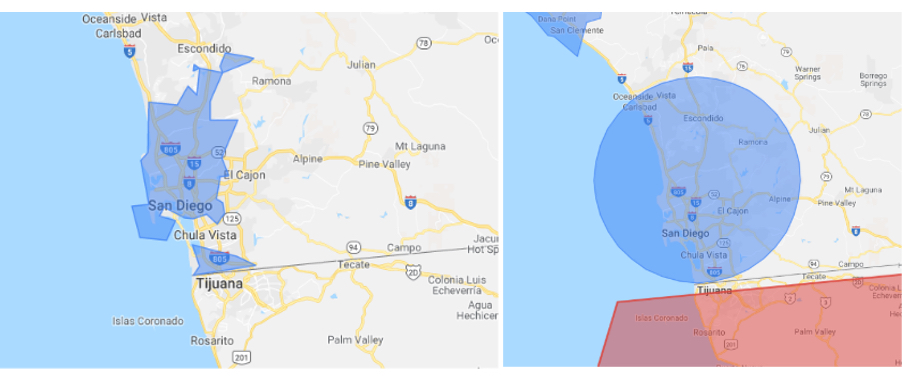The 5 Most Commonly Missed PPC Mistakes in 2019

Google Ads is one of the most effective yet complex advertising platforms in the world today.
One of the biggest challenges a lot of business owners face is that Google Ads is continually updating its platform. Each update means new features, new rules, and new techniques for optimization.
For business owners, if their Google Ad campaigns aren’t frequently kept up-to-date, then they will suffer. But for even the most experienced PPC specialists, there is still room for error or to miss opportunities.
Why do PPC Mistakes Happen?
In our experience, there are three main reasons that PPC campaigns begin to underperform for a business:
- The larger the account, the easier it is to miss important issues.
- Google is always releasing new updates and features for Google Ads, and if not kept up-to-date, a campaign won’t be optimized appropriately with all the new features.
- Campaigns may be producing mediocre results, and therefore, it’s not immediately apparent that there is a mistake.
Here at Brandastic, we do an extensive and in-depth audit of each of our clients’ Google Ads Account. Through years of experience, we have noticed a pattern of 5 commonly missed PPC mistakes that can easily be corrected for better results.
1) Location Targeting
Google makes it easy to target locations. Type in San Diego to target the audience in that location. Google even shows you the amount of reach available in that city.
However, when you choose a city, such as San Diego, it will strictly be the city limits, preventing your ads from showing to potential customers in nearby areas. Depending on your campaign and target audience, you may want to target more of the surrounding area, like Chula Vista, for example.
Radius Targeting usually works better for accurately targeting the surrounding areas of your target market. And if you find the radius overlapping a location you don’t service, such as Mexico, you can reduce the radius or use the Pin Mode to place the radius exactly where you want it. We recommend excluding the nearby areas you don’t service, so you are confident your campaign isn’t wasting money in those areas.
Also, the same goes when targeting counties. The target location may be too large, and your budget is being wasted on more areas that you don’t service. In this situation, using radius targeting allows you to target a large area while having more control.

It’s an easy mistake to look at the list of locations a campaign is targeting and think everything is in order. Reviewing the map view is a better indication of which areas are being targeted.
2) Improper Use of Negative Keyword Lists
In 2019, everyone should be using Negative Keywords to some extent. Here at Brandastic, we are still finding new campaigns that aren’t using Negative Keywords at all, which is an obvious mistake.
However, too many negative keywords can also be a mistake.
For example, maybe you have a beautiful extensive master list that you apply to all your campaigns, and it’s common practice to compile that list of negative keywords from the internet. However, when the list contains thousands of words, most people will not comb through the entire list to confirm the keywords are, in fact, applicable to their campaign.
Also, using a master list at the campaign-level may not be suitable for all ad groups within the campaign.
Each ad group should be very granular, and therefore, the negative keywords should also reflect this specificity.
Another reason we caution against long master lists is that all possible combinations of relevant search terms may not be known yet, and having a mass amount of negative keywords can prevent new applicable search queries from showing up. Doing this can also prevent you from finding new keywords and ad group topics to add to your campaign.
3) Conflicting Keywords
Of course, you don’t want Negative Keywords that are conflicting with your campaigns. Google’s helpful tool, the Recommendations tab, will identify if you have any obvious ones.
However, with such a long master list, there can be hidden conflicting keywords.
Meaning, they don’t directly conflict with your keywords, but rather indirectly, so Google does not catch the mistake.
In our experience with new clients, it is common, especially within location-based ad groups, for there to be second-hand conflicting negative keywords.
For example, let’s say a campaign is targeting Orange County, and it contains the word “Mesa” in its negative keyword list. The word may not conflict with any keywords, such as “Marketing Agency,” but the ads won’t show up for the search term “Costa Mesa Marketing Agency,” which could be a relevant search term in the Orange County campaign.
It’s essential to know exactly which words are in your negative keyword lists and determine whether they are applicable or not to each of your ad groups.
4) Not Utilizing Responsive Ads
For a little over a year now, PPC marketers have been benefiting from Responsive Search Ads. These relatively new ads allow you to include up to 15 unique headlines and four descriptions within a single Responsive Search Ad. Then Google’s machine learning technology shows different combinations of the ad copy based on the search results.
Google even provides a report of the impression share each specific combination received to allow you to determine the optimal ad copy, or decide if you want to pause the ad altogether.
Google recommends adding responsive ads to each ad group to optimize your campaign. They claim the ads will attract more clicks and conversions, and here at Brandastic, we have seen similar results.
Responsive Search Ads seem like a no-brainer. However, it’s a common occurrence for us to find new clients who haven’t updated their campaigns with these responsive ads.
It’s vital to add multiple text ads, including a responsive ad to each of your ad groups, to increase your campaign’s performance.
5) Improper Conversion Tracking
Any campaign goal, whether it’s to sell products, gather contact forms, or get people to view your website, can all be defined as a conversion.
However, there is a big difference between getting someone to view your website and getting someone to buy your product.
That’s why accurately tracking the correct conversions is of the utmost importance.
Here at Brandastic, we notice a common mistake among new client’s campaigns is that conversions were previously set up incorrectly.
It’s understandable to overlook conversion tags that are tracking the wrong goals.
A campaign could be gathering conversions, appearing to be performing correctly. Yet, somewhere down the line, it’s discovered that those conversions were, in fact, recording page-loads and not product sales.
Now all the previous data is skewed; you don’t know which ads work or what keywords are high performers, limiting your ability to make accurate decisions to optimize your campaign further.
Conversions help you evaluate your entire campaign, everything from ROI and audience insights to ad groups and keywords, but without proper conversion tracking, the data becomes unreliable.
It’s important to correctly identify your goals and set up conversion tags accordingly. And don’t forget to double-check that they are accurately tracking the correct goals.
In conclusion, Google Ad campaigns need to be continuously monitored and tweaked to keep them optimized. We recommend that even if you have set up your PPC campaigns and feel confident in them that you do an in-depth audit of each one to help reduce mistakes and to further optimize for better results.




